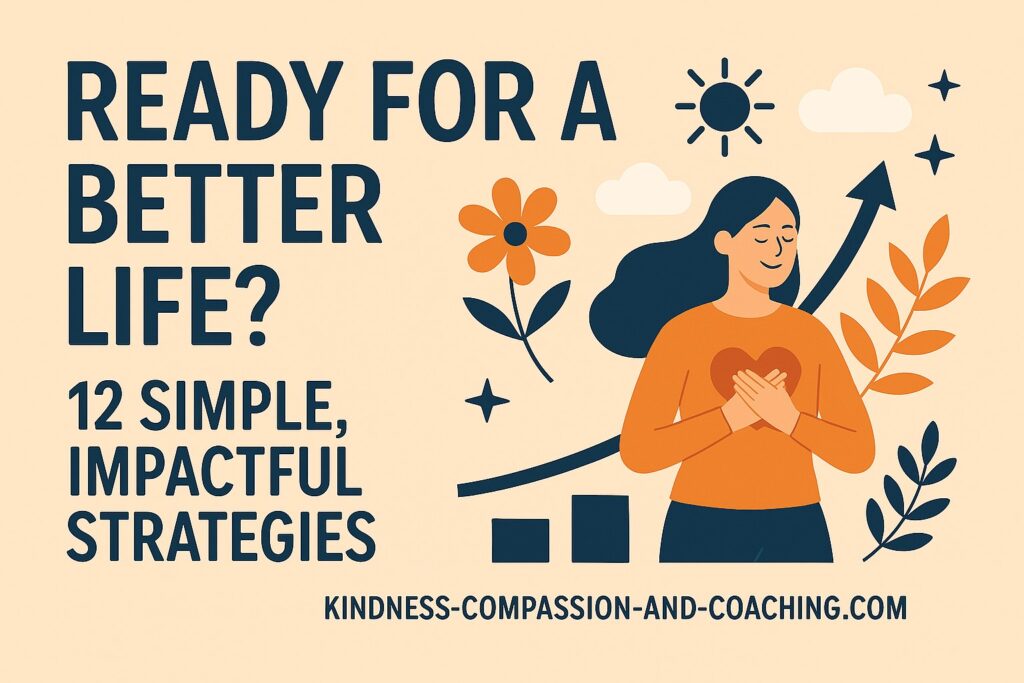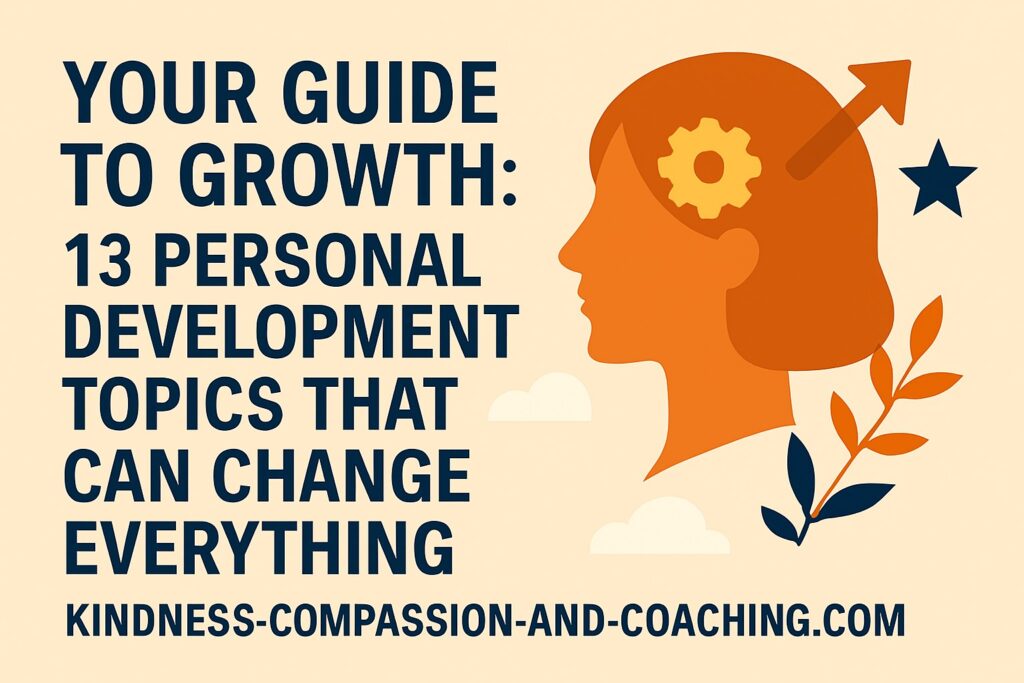The “For a Better Life” series continues! If you would like to start from the beginning, please visit Ready for a Better Life? 12 Simple, Impactful Strategies. Today, we discuss how to best measure personal growth and progress using Key Performance Indicators (KPIs).
Having a tool to measure your progress on this journey is as important as having a mapping app when you head out on a road trip. Without a sense of your destination, you might simply be travelling further from your home – but not necessarily in the right direction. So, how do you create a personal growth map that’s tailor-made for you?
That’s where personal Key Performance Indicators (KPIs) come in. Let’s dive into how to establish these powerful tools for your personal growth.
What Are Key Performance Indicators (KPIs)?
Key Performance Indicators (KPIs) are measurable values that demonstrate how effectively an organization is achieving its key objectives. These indicators are used to evaluate the success of a particular project, initiative, or overall performance.
KPIs are specific, quantifiable, and relevant metrics that help organizations track progress, make informed decisions, and drive improvements.
By setting and monitoring KPIs, a team or individual can assess their performance against strategic goals, identify areas for improvement, and make data-driven decisions to optimize operations.
Key Performance Indicators (KPIs) are not Just for Businesses
KPIs are not just for businesses. In fact, they can be a very effective tool for measuring progress towards personal goals.
Establishing your own personal KPIs can help you evaluate how effectively you’re meeting your objectives and guide you in developing improvement plans.
Personal Key Performance Indicators (KPIs) are specific, measurable values that help you track your goals. Think of them as your own personal scoreboard or measuring stick.
They can cover various areas like health, productivity, relationships, or learning. KPIs are useful because they help us see where we stand and where we want to go.

Step-by-Step Guide to Creating Your Personal KPIs
Picture trying to bake a cake without a recipe. You might get lucky, but chances are it won’t turn out right. KPIs are your recipe for success. They provide clarity, focus, and direction.
When you have clear KPIs, it becomes easier to keep your ultimate destination in sight, measure progress along the way, 0celebrate small victories and adjust your approach when things don’t go as planned.
Identify Your Goals to Establish Key Performance Indicators
The first step in establishing personal KPIs is to define your goals and objectives. What matters most to you?
Do you wish to improve your fitness? Advance in your career? Master a new skill? Save money?
Write down these goals. Include specific quantities and thorough descriptions of what success looks like. The clearer your goals are, the easier it’ll be to figure out how to measure progress towards them.
Identify the desired outcomes for each goal – what, specifically, do you want to achieve? Be sure to set realistic and achievable aspirations.
Be sure your goals are SMART: Specific, Measurable, Achievable, Relevant, and Time-bound.
For example, instead of saying, “I want to get fit,” try saying, “I want to run a 5K in under 30 minutes within three months.”
Key Performance Indicators Require You to Choose Metrics
Next, figure out how you’re going to measure your progress towards these goals. This is where your KPIs come into play.
If your goal is to get fit, your KPIs could include the number of workouts per week, daily calorie intake, or weekly running distance. Choose metrics that are appropriate, relevant, and measurable for each goal.
For example, if you’re tracking fitness progress, metrics may include body fat percentage, weight loss, or miles run per week.
If you’re setting goals related to your career, your KPIs may include job performance measures like the number of projects completed per quarter, customer satisfaction ratings, or promotions earned.
Set Your Baseline to Inform Key Performance Indicators
Before you start, it’s essential to know where you currently stand. This means gathering data about yourself related to your KPIs.
If you want to save money, look at your current savings and expenses. This baseline will help you quantify how far you’ve come as you progress.
Set benchmarks for each of your KPIs and measure progress over time.
Regularly tracking progress will provide valuable insights into how effectively you’re meeting your goals and can help identify areas for improvement.
Tracking is key! Use a journal, an app, or even a simple spreadsheet.
Purchase Tools to Help Track Progress
Regular check-ins will help you see trends, celebrate wins, or tweak your approach if necessary. It’s like looking at the scoreboard during a game. Knowing the score helps you strategize for the next round.
Tracking progress can also help you stay motivated and focused on your objectives.
Be Flexible and Adjust Your Key Performance Indicators
Sometimes life throws curveballs. It’s important to be flexible with your KPIs. If you find they’re not working or your goals have changed, adjust them.
Don’t be afraid to evolve your KPIs as you grow and learn about yourself.
Celebrate Your Wins
Every small victory matters! When you hit a KPI, take a moment to celebrate. It could be as simple as treating yourself to a new fitness app or outfit or sharing your achievement with friends or family.
This positive reinforcement keeps you motivated and focused.
Evaluate and Refine Your KPIs
Evaluate your KPIs regularly and be open to refining or adjusting them as needed.
As you make progress toward your goals, you may find that certain metrics are less relevant, or you may identify additional metrics that will help you better track your progress.
Stay flexible and open to making changes and remember that the intent is to use metrics to drive personal growth and achieve your desired outcomes.
How to Use KPIs to Track Your Personal Growth Progress
Tracking progress towards personal goals using KPIs is a powerful practice. As you define your personal goals and objectives, identify relevant and measurable metrics, and track progress towards desired outcomes, you are creating a clear path to personal development and success.
Evaluate and refine your KPIs regularly to ensure they remain relevant and effective tools for tracking progress and be willing to make adjustments based on your evolving personal goals and objectives.
Enjoy the process and don’t forget to celebrate your accomplishments along the way.
Thank you as always for reading.
If you haven’t yet subscribed, please enter your email address so you never miss a post.
Affiliate Disclosure: Some links in this post are affiliate links. As an Amazon Associate, we earn from qualifying purchases. Thank you for supporting Kindness-Compassion-and-Coaching.com at no extra cost to you.

Joan Senio is the founder of Kindness-Compassion-and-Coaching.com. Joan’s career includes clinical healthcare plus 20+ years as an executive in a nationwide health care system and 15 years as a consultant. The common threads throughout Joan’s personal and professional life are a commitment to non-profit organizations, mental health, compassionate coaching, professional development and servant leadership. She is a certified Neuroscience Coach, member of the International Organization of Life Coaches, serves as a thought-leader for KuelLife.com and is also a regular contributor to PsychReg and Sixty and Me. You can read more about Joan here: Joan Senio.
















No Responses